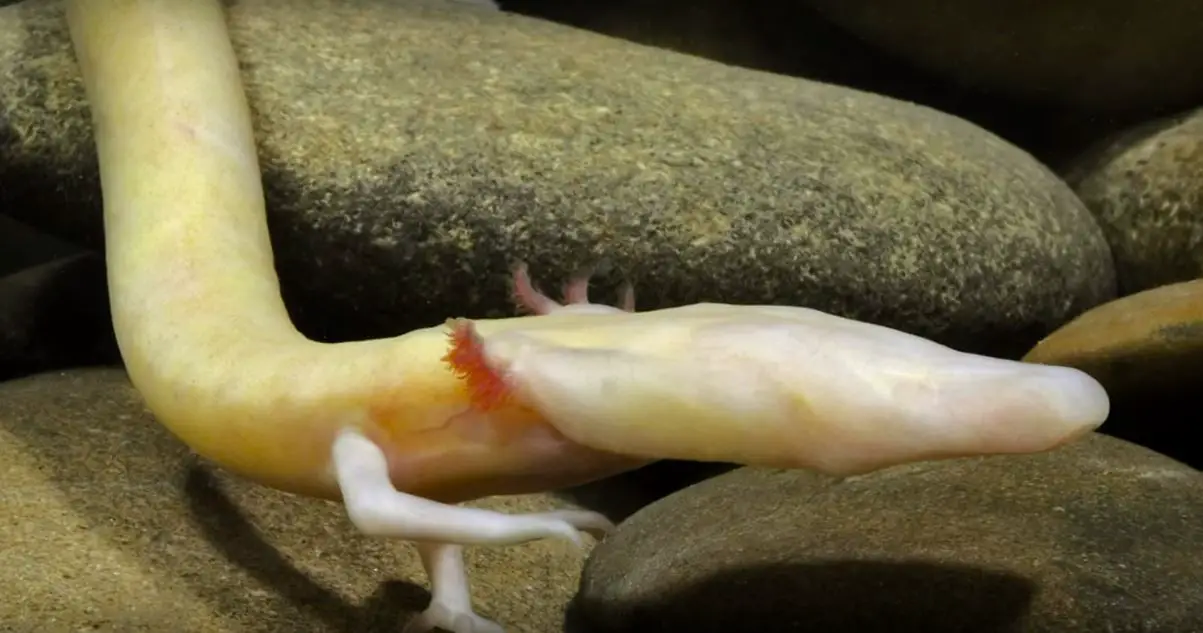Ljubljana related
STA, 21 April 2020 - Slovenian researchers are believed to be the first to have proved the existence of abundant plant viruses in wastewater that remain infective after conventional wastewater treatment, which means they can infect plants and cause disease when released into the environment.
The latest achievement by researchers of the National Institute of Biology's Department of Biotechnology and Systems Biology has been published in Water Research, a journal of the International Water Association that publishes research on the science and technology of water quality and its management.
The scientists note that presence of plant, animal and human viruses in water is a major risk when wastewater is recycled for example for watering plants, a practice applied extensively in many parts of the world.
The release of viruses into rivers may lead to viral transmission if the river water is used for irrigation or if the viruses find a new host such as plants growing near the water.
Considering new findings about the great diversity of viruses in water and their infectivity the Ljubljana-based institute says that effective methods are needed to monitor the presence of pathogenic viruses in water.
The institute has been researching viruses in various water samples for years and is currently focusing on detecting the novel coronavirus in wastewater.
Katarina Bačnik, the lead author of the article published in Water Research, says that plant viruses, that is those that cause disease in plants, are present both when wastewater enters a purifying plant as well as when it is released into a nearby river.
Applying viral concentration technology with the help of purification media made by the Slovenian company BIA Separations and the sequencing of viral nucleic acids, the researchers detected 47 different types of plant viruses, including those not previously reported in Slovenia.
They also proved their infectivity, that is the ability to infect plants both before and after passing through the purifying plant as the plants infected with wastewater showed signs of disease.
Although the study focused on plant viruses, the researchers also detected in wastewater samples the presence of bacteriophages (viruses that infect and replicate within bacteria) and some human viruses that cause gastrointestinal diseases.
Maja Ravnikar, the head of the Department of Biotechnology and Systems Biology at the National Institute of Biology, says that, at the time when virus has become an everyday word, it has become even more obvious how little humanity knows about viruses and how important it is to study them.
The research had been conducted under the leadership of Maja Ravnikar, with young researcher Katarina Bačnik as the lead author and also involving Denis Kutnjak, Ion Gutierrez Aguirre, Nataša Mehle, Anja Pecman and Magda Tušek Žnidarič.
Apart from research project and programme financiers, the study was also supported by the Domžale-Kamnik central purifying plant, a long-term partner of the National Institute of Biology, which collected wastewater samples.
The article is available at https://www.sciencedirect.com/science/article/pii/S0043135420301640?via%3Dihub.
STA, 27 March 2020 - Matevž Dular, a lecturer and researcher at the Ljubljana Faculty of Mechanical Engineering, has been awarded the prestigious Friedrich Wilhelm Bessel Research Award. This is the second Bessel prize for a Slovenian researcher in as many years, last-year's winner being particle physicist Jure Zupan.
Financed by the German government and conferred by the Alexander von Humboldt Foundation on around 20 scientists each year, the honour includes a EUR 45,000 grant and a six-month research project in Germany.
The Bessel prize is intended for non-German scientists and scholars, internationally renowned in their field, who completed their doctorates less than 18 years ago and are expected to continue producing cutting-edge achievements which will have a seminal influence on their discipline beyond their immediate field of work.
Dular, who was honoured for his impressive list of academic achievements, specialises in fluid mechanics, ultrasound, cavitation and water purification.
The award comes with an invitation to cooperate with German experts in a project of his choosing. Dular was nominated for the prize by professor Claus-Dieter Ohl of the Otto von Guericke Mageburg University for Natural Sciences, which said Dular is to spend six months at the Physics Institute there to research application possibilities for cavitation.
Dular talks about his work, with English subtitlesHis young age (41) notwithstanding, Dular has worked for over four years at universities in Germany, France an US and also led several projects for the European Space Agency. With a project involving the use of cavitation for water purification he has helped secure a EUR 2m grant from the European Research Council (ERC).
Meanwhile, Slovenia had another Bessel Research Award winner last year in Jure Zupan, a professor at the University of Cincinnati. He was honoured for his research on dark matter, antimatter and subatomic particles called quarks.
Zupan has also been honoured with the NSF Early Career Award and is an American Physical Society Fellow. As a post-doctoral researcher he has worked at the Technion University in Israel and at the Carnegie Mellon University in the US. He is a co-founder of the popular science web portal Kvarkadabra and author of four popular science books.
STA, 6 March 2020 - Slovenia will get a new biotechnological centre on the western outskirts of Ljubljana near the Faculty of Chemistry and Chemical Technology. The contract on the launch of the EUR 21 million project was signed on Friday.
As part of the project, which will be one of the biggest investments in biotechnology in the region, a new 6,500-square-metre research centre is to be built by 2023.
The contract on the construction of the Biotechnological Hub of the National Institute for Biology (NIB) worth almost EUR 20.8 million was signed today by Education, Science and Sports Minister Jernej Pikalo and NIB head Matjaž Kuntner.
The EU will contribute EUR 16 million, the state will chip in EUR 4 million, while the rest will be covered by the NIB.
According to Kuntner, the construction should start at the end of this or the beginning of next year.
The two-storey building with a multitude of labs, lecture rooms, conference rooms, offices, and technical and maintenance rooms will be located in Večna Pot street in the east of Ljubljana, near three other faculties.
Minister Jernej Pikalo noted that the funding of science and research was on the rise, but that Slovenia was still lagging behind in this respect and that one project would not make up for everything.
This investment is a small step towards creating better conditions for science and research, he said.
According to Kuntner, the new centre will strengthen Slovenia's excellence in science on the international level, stop brain-drain, introduce new biotechnologies and enhance ties with the business sector and tertiary education as well as various public institutes and science centres.
The European Space Agency (ESA) has announced a new series of bedrest studies, some of which will take place in Slovenia, with the aim being to learn more about the human body in space. In a bedrest study volunteers stay in bed for long periods of time – 60 days in the research set to be carried out in Planica by the Jožef Stefan Institute.
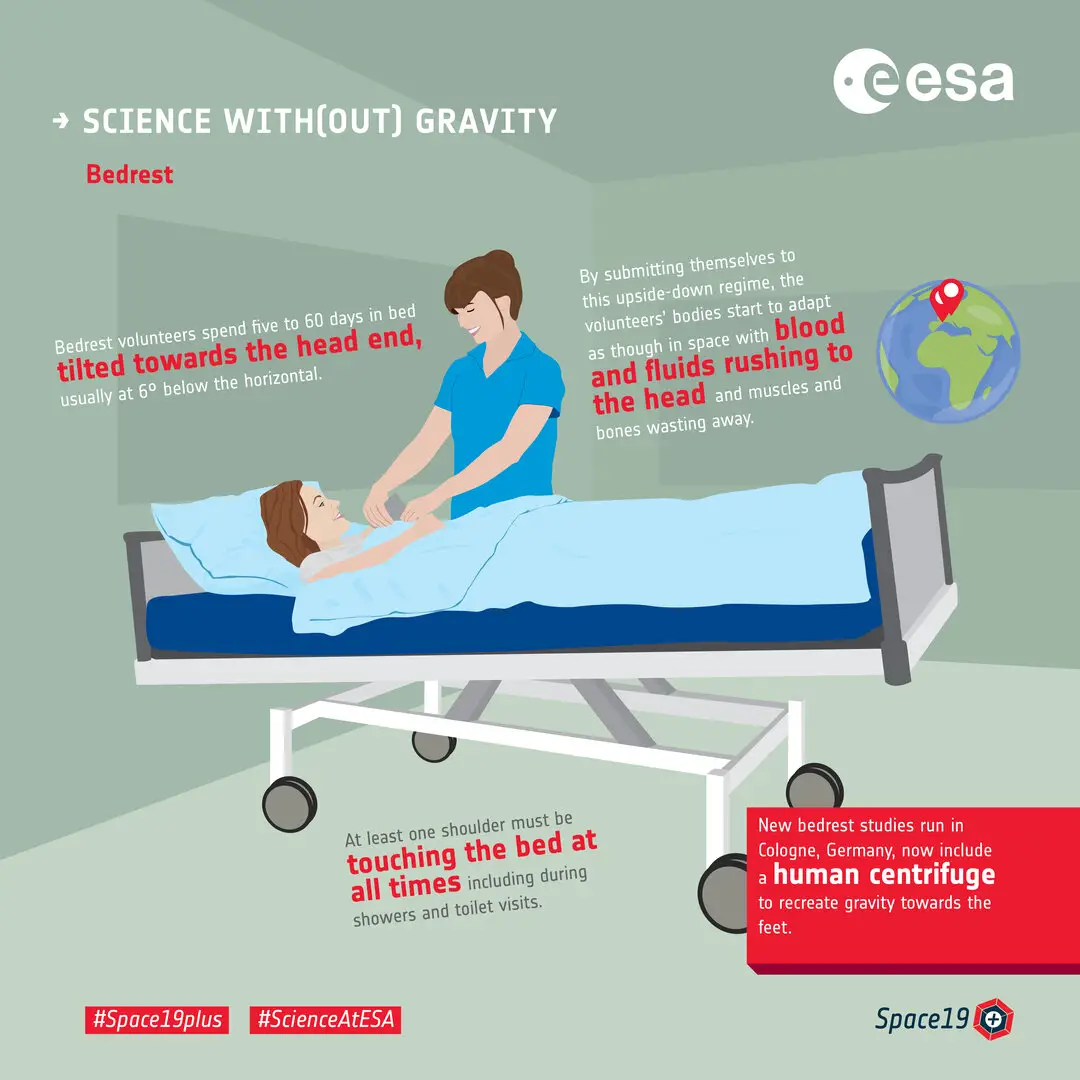
Source: ESA
But a lack of movement won’t be the only limitation on participants for two months, as there are two further conditions attached to successful participation. First, while in bed their heads must remain 6° below the horizontal. Second, throughout the whole 60 days at least one shoulder needs to remain in contact with the bed at all times – during meals, showers and toilet breaks. The effects of this regimen will be blood and other fluids moving towards the head, as muscles and bones start wasting away.
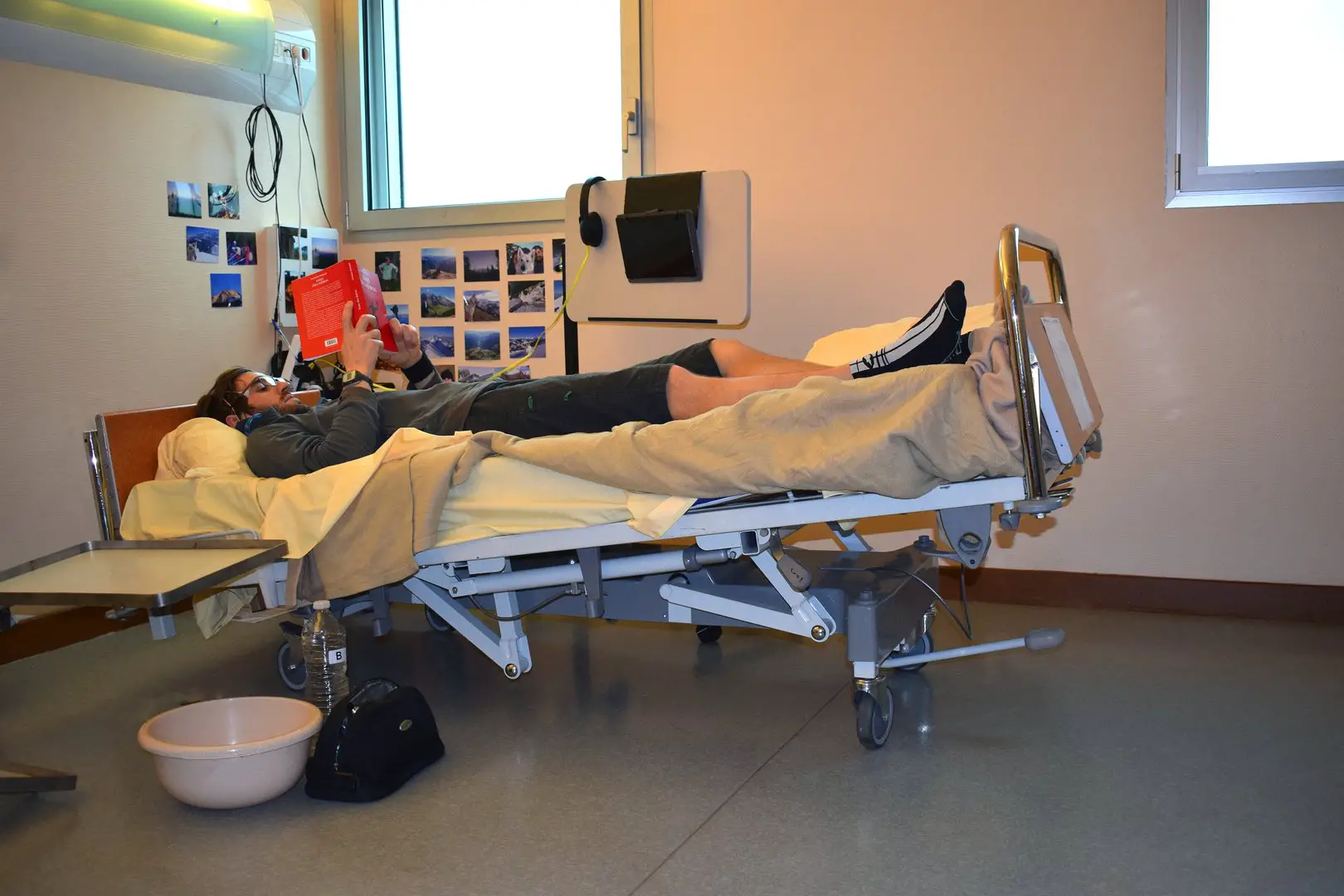
Source: ESA
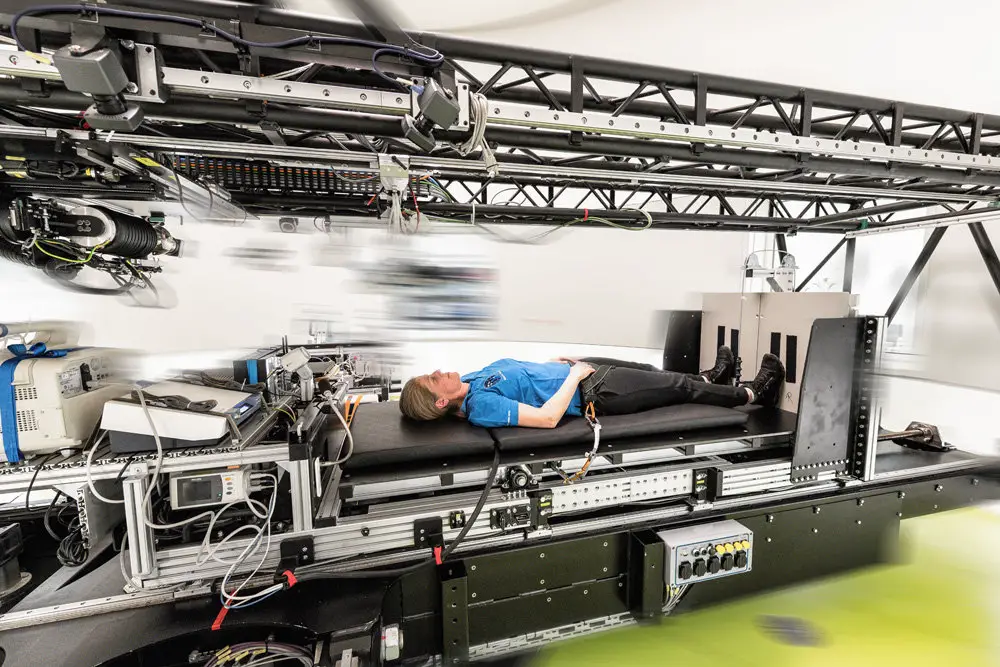
Source: ESA
And while they’ll be staying on their backs the 48 volunteers will see some movement, as the centre is equipped with a centrifuge that can spin them around to recreate gravity pulling towards their feet while laying down, so research can find out ways to counteract the adverse effects of living in space.
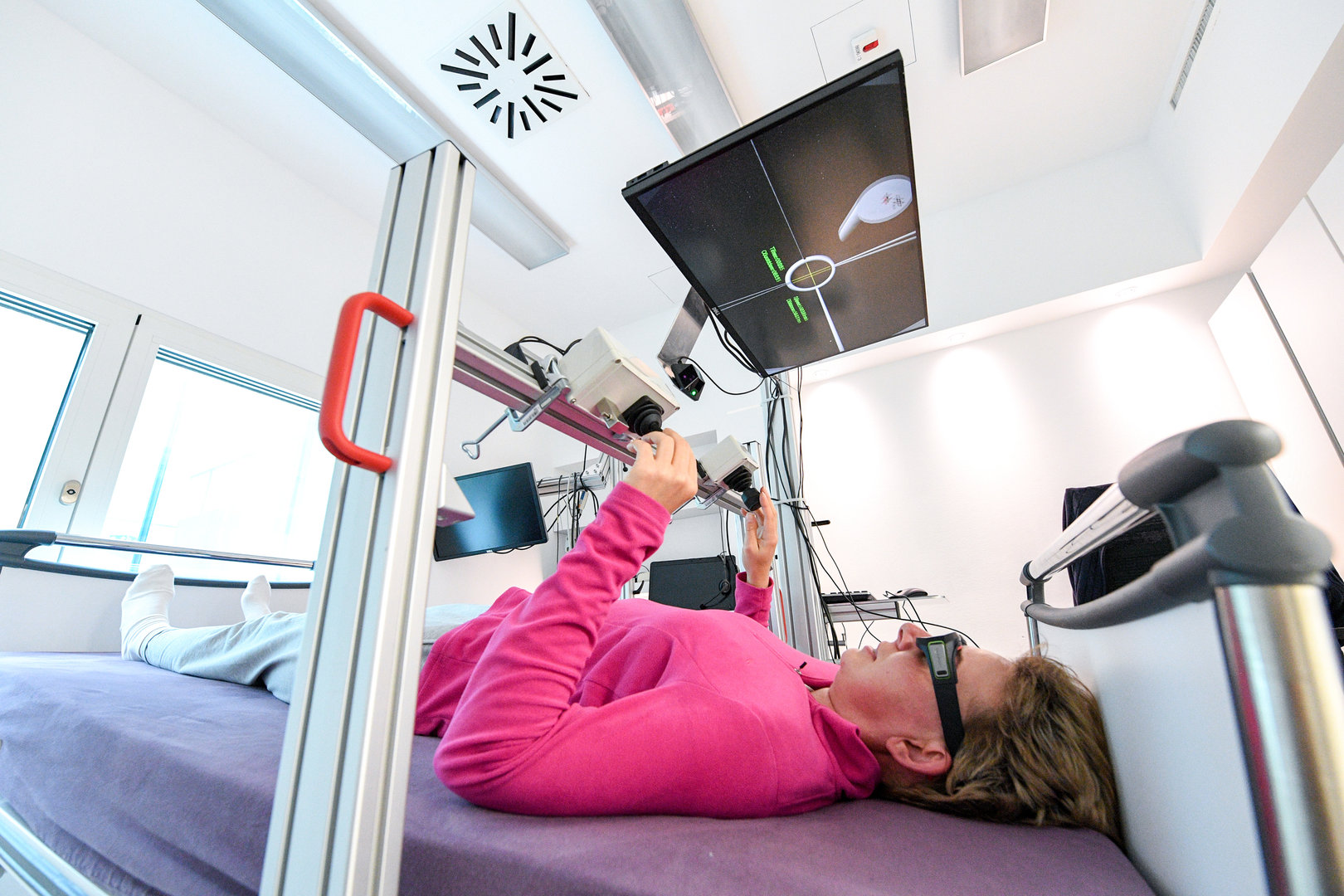
Source: ESA
A press release by the ESA notes that Planica is a good location for studying the effects of life off the planet , since it is located at high altitude and there is less atmospheric pressure, as in any future lunar habitat. To further add to the realism the test centre also enables researchers to change the environmental conditions to make them better resemble those in a spacecraft or space habitat. Testing volunteers with low oxygen levels, for example, can produce data relevant to future space missions where the confined environments of spacecraft and space habitats could contain less oxygen.
A total of 48 volunteers are wanted, half of whom will be in Slovenia, the other half in France, and they’ll be paid around €15,000 for their help. The call for volunteers to take part in the study doesn’t seem to be open yet, but you can learn more about the project, which is accepting research proposals for other things to subject the participants to, here.
STA, 13 February 2020 - Slovenian researchers were a part of an international team that has made a breakthrough discovery in thyroid gland research. Together with researchers from the UK and Germany, they have determined the entire structure of human thyroglobulin, the protein precursor of thyroid hormones, for the first time.
The results of the study into the protein that is essential for the growth and development of thyroid hormones will have a significant impact on the treatment of thyroid gland disorders, the Jožef Stefan Institute (IJS) said in a press release on Thursday.
Using cryo-electron microscopy, the researchers from the IJS and the Centre of Excellence for Integrated Approaches in Chemistry and Biology of Proteins, Dušan Turk, Ajda Taler-Verčič and Miha Renko, cooperated with researchers from Cambridge, Berlin and Bristol to identify the full-length structure of thyroglobulin for the first time.
The results of their study were presented in the scientific journal Nature.
Thyroglobulin is the protein that is used to create the T3 and T4 hormones in the thyroid gland. The two hormones regulate energy consumption of human cells and aside from thyroglobulin they are the only molecules in the human body that contain iodine.
Iodine is thus a key element for proper development and functioning of the human organism and thyroglobulin enables its storage for periods when the body is not receiving it in sufficient quantities.
The functioning of the thyroid gland is well researched, which helps control functional disorders, but up until now it was not clear how hormones are actually created in the gland.
Human thyroglobulin is a giant molecule consisting of two chains of 2,768 and 5,536 amino acids, respectively.
The structure of thyroglobulin determined by cryo-electron microscopy has revealed that the molecule has only seven spots where hormones are created.
Each molecule is formed from two amino acids called tyrosine. The newly created hormones are extracted by enzymes, protease, through decomposition of thyroglobulin into amino acids.
The article on the full-length structure of thyroglobulin is a result of almost twenty-year work and a revolution in cryo-electron microscopy, IJS said in the press release.
STA, 11 February - Women remain under-represented in scientific and technical professions, especially at senior levels. Unconscious bias, double standards and gender stereotypes are some of the reasons why headway towards gender equality in this field remains sluggish. Indeed, in some areas there has not been any progress at all.
Worldwide only about a third of research staff are women and only about 30% of women opt for programmes that fall under the umbrella of STEM (science, technology, engineering and mathematics), according to UNESCO data.
University of Nova Gorica astrophysicist Andreja Gomboc, who chairs a commission for equal opportunities in science, says low representation of women in STEM is bad not just for women but for these fields of scientific endeavour in general.
"Women significantly contribute to tackling the big issues humanity faces in the 21st century and it is necessary to create opportunities for their full participation in science. Addressing these issues requires leveraging the entire human potential," Gomboc told the STA ahead of the 11 January International Day of Girls and Women in Science.
For women, not choosing a career in STEM limits their career options since the high-tech society of today offers huge employment opportunities for STEM graduates. "If girls do not chose these fields, they don't have the opportunities."
Gomboc says gender discrimination is no longer as explicit as it used to be, but there is still a lot of bias, double standards and gender stereotypes that dissuade women from pursuing a career in science.
Slovenia's largest university, the University of Ljubljana, has been dominated by men since it was established a century ago. The latest figures show the ratio of men to women among faculty is roughly 60:40, with the share of women declining the farther up the career ladder one goes.
In 2018, there were 56% of men among assistant professors, 60% among associate professors and 69% among tenured professors, according to Aleksandra Kanjuo Mrčela, professor of sociology at the Faculty of Social Sciences.
Despite the persistent imbalance, she believes that the situation will gradually improve as the share of men has been declining. "It is expected that in the coming years the gender structure will be balanced across all job segments," she says.
Gomboc believes that in order to improve the conditions for female researchers, it is necessary to consistently comply with gender equality provisions at all levels. This does not mean men and women have to be the same, it means that "we are equal in practice, that we have equal opportunities and equally participate in all spheres of public and private life".
She says Slovenia has some good baseline solutions, for example 12-month parental leave, but new steps are being made very slowly. "We know what we have to put down in the sections on gender equality in applications for EU projects and strategy documents ... but then many ignore that."
Indeed, she says there has been a negative trends in certain areas, for example in top national awards for science. "Among last year's recipients of Zois and Puch prizes, there were only 12% of women and few women were nominated. This means that the environments in which women researchers work do not value their achievements the same way they value the achievements of their male colleagues."
Our other stories tagged “women in Slovenia” are here
STA, 4 February 2020 - The University of Maribor and its Medical Centre (UKC) have teamed up with partners from abroad to launch an EU-funded project to provide an AI-assisted post-treatment support to cancer patients.
The project Persist is the first such large European project at UKC Maribor and the first such cooperation between the centre and university.
"This is the first time that we've pooled the expertise that is abundant in Maribor in such a way," UKC Maribor director general Vojko Flis told reporters on Tuesday.
Technological solutions to build an innovative system to support doctors in post-cancer handling of patients are being developed by the Maribor Faculty of Electrical Engineering and Computer Science.
As part of a pilot project carried out by UKC Maribor and three other European hospitals, the Maribor hospital will monitor 40 patients cured of breast and colon cancer with the help of a smart watch.
The watch also will allow patients to communicate with psychologists and will record data on their state of health as well as their moods and how they feel through the way they communicate in text and pictures.
Based on the data collected, new models of health data analyses will be developed which will serve in further handling of patients after cancer treatment.
The partners will also develop a mass data platform that will bring together both components and combine them with digital recordings on patients used in hospitals.
Involving 13 institutions from ten countries, the project Persist will run until February 2023. Valued at over EUR 5 million, it is fully funded by the EU under the Horizon 2020 programme.
EUR 700,000 of the sum is allocated to partners from Slovenia, including the Maribor Faculty of Arts, which provides support in the field of psychology.
Oncologists hope the project will allow them to better monitor their patients so as to help them better to rehabilitate.
"We can treat cancer. Once the patient ends treatment, they must be returned into society. I believe we can get important data there how to help on the path of that rehabilitation," said Maja Ravnik, the head of the UKC Maribor oncology department.
In Slovenia, cancer has become the leading cause of death in men and the second leading cause of death in women, show official data released on World Cancer Day.
As many as 15,072 people got newly diagnosed with cancer in 2016, which means a new cancer diagnosis every 35 minutes.
The news that Slovenia is #21 on Bloomberg’s 2020 Innovation Index, with its rise over the last 12 months due to strong patent performance, is a reminder that there’s a lot more to the country than tourism and cultural heritage. Perhaps to the surprise of visitors who only make it to Bled and Ljubljana Old Town, Slovenia is a modern country with a broad-based economy, its position strengthened by the many research projects its scientists are involved in.
In case you missed them the first time round, here’s a brief review of some of the developments and discoveries we’ve noted on TSN over the last year or so.
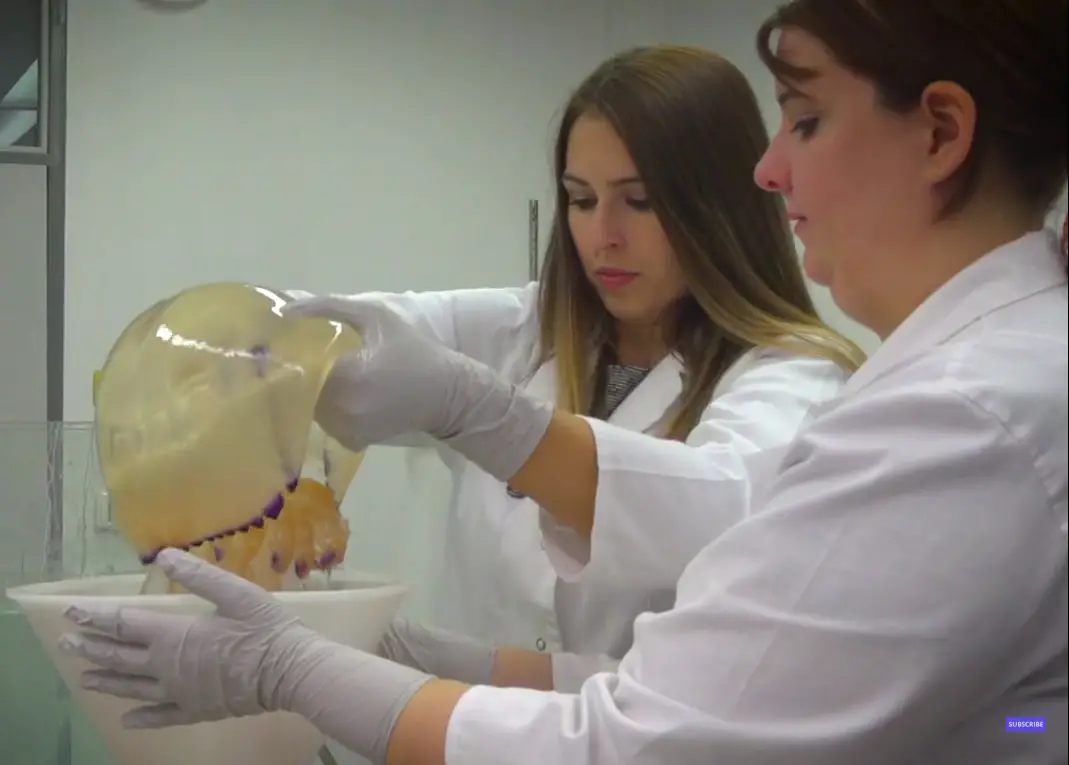
Source: YouTube
Renewable energy, better batteries and cleaner oceans
A Slovene team has developed a tandem solar cell that transforms solar energy into electricity in the most efficient manner seen to date, an important step towards photovoltaics becoming more competitive in power production.
The move to renewable energy will require new kinds of devices to store the power produced, and, Slovenian researchers are working on batteries that could end the need to mine certain minerals outside of Europe, as well as on aluminium batteries that have a greater capacity that current ones, and also contain less damaging and more readily available materials.
However, no matter what developments there are in terms of renewables, climate change is already having an impact on the environment. One sign of this is the proliferation of jellyfish blooms in the Adriatic and elsewhere. Such infestations are inspiring researchers to look for new ways to use an oversupply of jellyfish – as food, as fertilizer, and, in Slovene/Israeli project, as a way to remove microplastics from the oceans. To achieve this the project is developing a filter that makes use of jellyfish mucus to trap the tiny pieces of pollution.

AI, quantum computers and a new form of matter
Of course, the future will be dominated by computers that are becoming ever faster, smaller and smarter, and here Slovenia also plays a part. For one, UNESCO is sponsoring a global AI research centre that will be based in Ljubljana. For another the Jožef Stefan Institute (JSI - Institut "Jozef Stefan”) and a team from Switzerland have confirmed the existence of two kinds of atypical anyon quasiparticles in a special kind of quantum magnet, Ruthenium(III) chloride – said to be a key step towards the creation of a topological quantum computer. The JSI is the country’s leading research centre, and last year researchers working there discovered an entirely new kind of matter based on “electron jamming”, one that as yet cannot be understood with existing physics.

Source: Wikimedia Doc James CC-by-SA-4.0
Ketamine, stem cells and gene-editing
Turning to the life sciences, researchers at the Ljubljana Faculty of Medicine, the biomedical centre Celica and the National Institute of Chemistry, discovered a new molecular mechanism of action in ketamine that has potential for the development of fast-acting antidepressants. While a team involving Slovenians also published a ground-breaking cell differentiation paper that could help revolutionise personalised regenerative medicine and the use of stem cells. Another cutting edge cell technology is the CRISPR gene-editing technique, with researchers at the JSI working on new applications for this.
Source: YouTube
The mysteries of the human fish, dolphin and honey bee
Another medical discovery, one that draws on one of the country’s most famous animals, is the decoding of the olm’s genome, with this creature perhaps better known as the “human fish” or proteus. Among the olm’s remarkable attributes are the ability to live up to 100 years, to survive (and thrive) for long periods without food, to overeat with damage to its organs, and regenerate lost limbs.
Moving from the karst to the coast, a team based in Piran watched the dolphins in the bay and learned that they share the area based on time, not space. Finally, the humble bumble bee, one of the world’s most important pollinators and another icon of Slovenia (in the form of the Carniolan Grey), has also attracted the attention of the Jožef Stefan Institute. A team there has applied machine learning to help understand the sounds the bees make, and the importance of temperature for their colonies.
You can find more discoveries, inventions and achievements in our section Made in Slovenia.
The National Institute of Chemistry reported last week that it has acquired a new European project, NAIMA (Na-ion materials as essential components to manufacture robust battery cells for non-automotive applications), in which it will participate as a partner in the development of new sodium-ion batteries.
The NAIMA project aims to demonstrate the cost efficiency and robustness of sodium-ion batteries and prove them to be one of the best alternatives to the current lithium-based systems of energy storage. The new energy storage solutions would address the current problems of lithium-ion batteries, mostly produced in Asia, and allow for the localization of the entire chain of production. The main problems with lithium-ion batteries are in the scarcity of materials and sometimes safety, when flammable electrolytes are used in high energy density appliances.
The new EU-funded NAIMA project was kickstarted in Amiens, France and awarded a Horizon2020 programme grant of almost €8 million by the European Commission. The duration of the programme will be 36 months, having started December 1, 2019.
The project will test six prototypes of Na-ion batteries in three different business scenarios. These scenarios will provide concrete evidence of the technology's competitiveness in three real-world settings – renewable production, industry and households.
New carbon materials will be developed at the Department of Materials Chemistry of the National Institute of Chemistry for use in prototype anodes of Na-ion batteries.
Related: Slovenian Researchers Developing Ocean-Cleaning Microplastic Filter Based on Jellyfish Mucus (Video)
Slovenian Researchers Developing Ocean-Cleaning Microplastic Filter Based on Jellyfish Mucus (Video)
Euronews reports that Slovenian researchers at the National Institute of Biology (Nacionalni inštitut za Biologijo), working in cooperation with a team from Israel, are developing a way to remove microplastic particles from the oceans – using jellyfish mucus. The gelatinous mucus, which the jellyfish secrete when under stress, is being used to develop a TRL 5-6 prototype microplastics filter that could, if successful, could be one approach to reduce sea pollution.
Slovenia is especially well-suited for such work, as the Adriatic often suffers from “jellyfish blooms”, destructive invasions of these simple yet fascinating creatures, caused by climate change and overfishing.
The work, which is funded by the EU’s Horizon 2020 initiative, is part of the broader GoJelly project, which is also examining the use of jellyfish, caught or farmed, in agricultural fertilisers – due to the high levels of phosphate, nitrogen and potassium they contain – and as a food, with jellyfish already consumed in parts of Asia (see the related papers “Mediterranean jellyfish as novel food: effects of thermal processing on antioxidant, phenolic, and protein contents” and “The attitudes of Italian consumers towards jellyfish as novel food”).
You can learn more about the various GoJelly projects here, while you can monitor jellyfish blooms in the Adriatic here.


